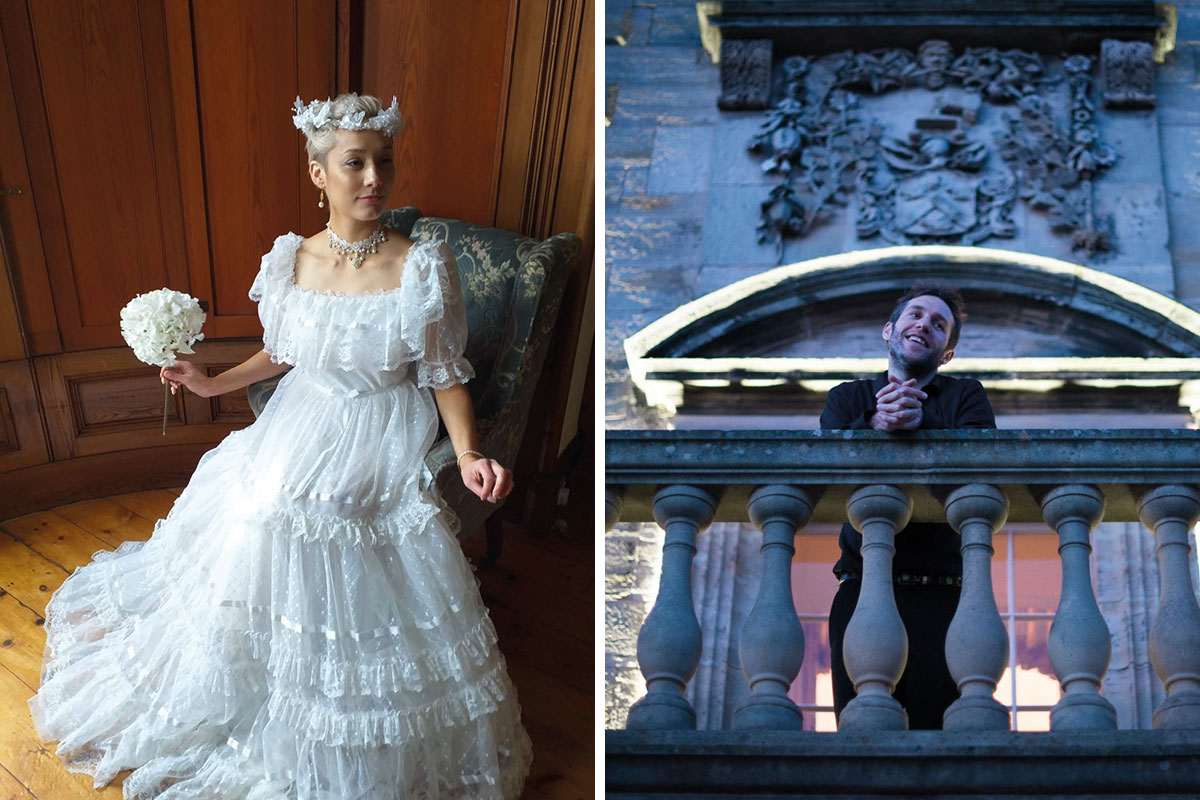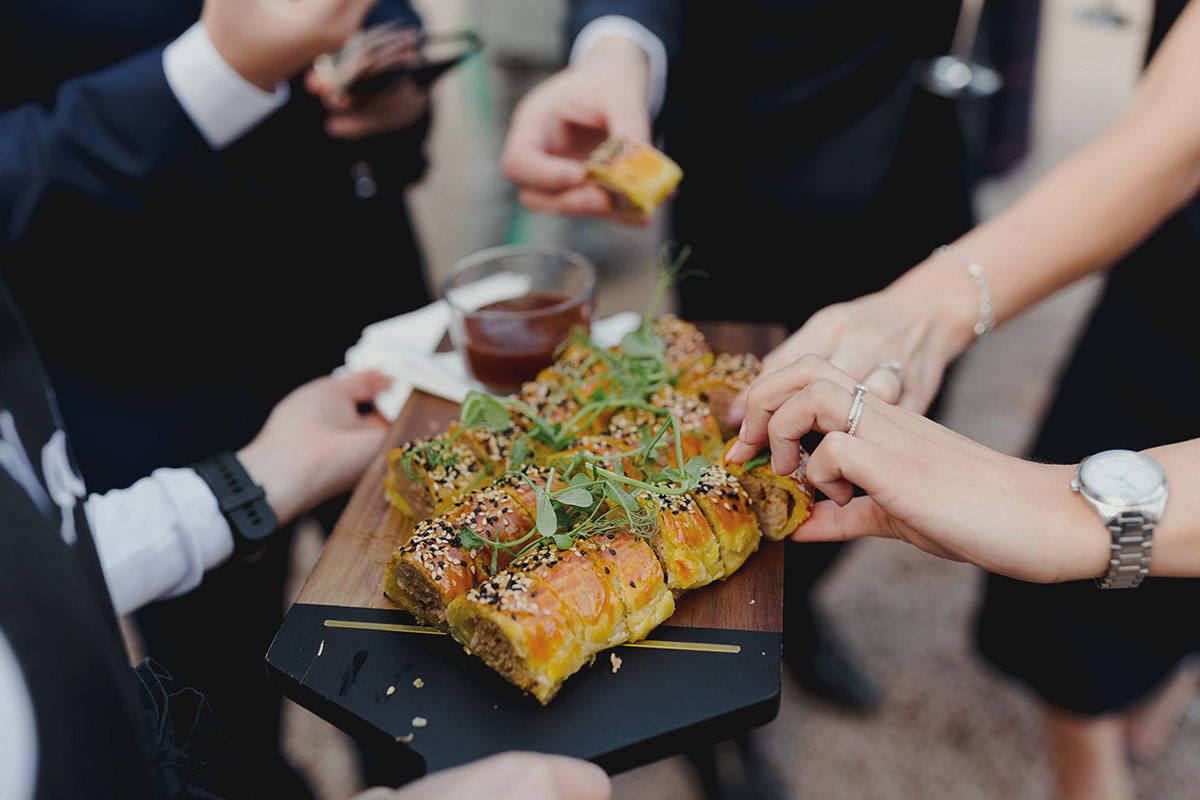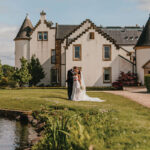Weddings can be wasteful events, so Claire Muir hears from some Scottish suppliers to discover how you can make more eco-aware choices for your big day and start married life with a clearer conscience

Did you know the average wedding produces almost 15 tonnes of CO2? It’s a frightening amount (for comparison’s sake, you as an individual, produce 12 tonnes over the course of a whole year). With stats like this, it’s no surprise that many couples marrying in Scotland are carrying their values and carbon-footprint commitments through to their big day. Some are considering pre-loved gowns. Others are seeking out vegan-only menus. And plenty are doing all they can to cut out waste.
Something green
“Weddings aren’t great for the environment but they’re part of the richness of life and lots of people want to get married – and thank goodness they do, or we’d be out of a job,” laughs Susannah Dale, co-owner, operations director and wedding planner at Revelry Events. “We meet lots of couples who are looking for ways to cut their carbon footprint on the day, and the wedding industry is really taking note of this as well.
“We’re seeing changes in the supply chain,” she continues, “people making sure staff are paid fairly and treated well, and suppliers actively looking for more eco-friendly ways of providing their services, whether that’s vegan makeup brands, swapping to biodegradable items or using local ingredients.”


Let’s get started!
If you’re set on having an environmentally friendly wedding, you’ll be happy to hear it’s not actually too difficult to achieve, especially since lots of businesses in the industry offer sustainable alternatives. Susannah at Revelry recommends tackling the big, impactful stuff first: “Try to pick a venue that’s local for the majority of your guests, or consider self-sufficient venues that actively work to reduce their carbon footprint.”
At The Harbour Chapel in Dunbar, owner Fiona Veitch actually designed her business model around the notion of ‘less is more’: “The venue retains so many of its original features, so it doesn’t need a lot of additional – and sometimes unnecessary – decor,” she says. “And we’ve reclaimed and reused as much of the fabric of the building as possible. Our banqueting tables were made from the original floorboards, and we kept our church benches and fitted them with castors so they can be moved easily. We turned the organ pipes into wall lights, used the leftover timber from the spare benches to build the front of our bar, and we have had the original tiled floor in the reception area lovingly restored.”Fiona champions sustainable suppliers in the area and urges couples marrying at the Chapel to really think about what they want. Can’t decide on something? “If it’ll end up as waste at the end of the day, don’t have it!” is her advice.
On the subject of venues, choosing just one place for the ceremony, reception and accommodation will instantly slash emissions – as will a recommendation that guests car-share or consider public transport.
Meanwhile, save print, paper and postal delivery with online invitations, and on the day make a big impact with lots of small changes: “Think charity donations or tree planting in lieu of traditional favours, and make sure your decor is recycled, upcycled, DIY or borrowed from friends who’ve been through the whole marriage process,” suggests Matt Crofts of Next Scene Films, a carbon-balanced videography company. “Have an outdoor wedding where possible and try to make it a plastic-free event,” he adds. “And, of course, use companies that are carbon-balanced or even carbon-negative.”


Dress to save the planet
If you’re keen to avoid a one-wear-wonder, scout out a precious pre-loved gown for your big day – it’ll save you money while saving the planet. After you’ve tied the knot, could you sell it on (or donate it to charity or a theatre)?
If you’ve got your heart set on an outfit of your own (and there’s nothing wrong with that!), could you go down the pre-loved route with the accessories? After all, some of the very best hats, bags, shoes and gloves out there are vintage…
Remember that wedding jewellery can be passed down through families or bought second-hand, too. And if you do need to tick off your ‘something new’ here, insist on Fairtrade pieces and those made with recycled gold or silver or ethically sourced gemstones.


Go for British blooms
From how they’re grown to the chemicals used in their cultivation and the miles they’ve travelled, flowers can be a massive and unnecessary drain on the world’s resources. Of course, couples may go for dried or artificial options, but if it’s gotta be fresh, make sure to follow the two golden rules – go local and go seasonal.
“We can import flowers all year round but bear in mind that some don’t travel well – delicate blooms like sweet peas or lily of the valley, for example,” explains Debbie Scott, who grows every flower at her East Lothian Flower Farm with nature in mind. “There’s usually something similar growing here that will be just as beautiful, or that can be grown for your event.”
The changing seasons mean so many options to choose from, she adds: “Foliage is abundant here in Scotland and provides amazing texture and interest, while nature has a dazzling array of colours, from gorgeous pastels through to deep burgundy-chocolate cosmos – one of my all-time favourites. Discuss with your florist or flower grower what’ll be in season locally and remember the added bonus – they’ll be scented!
“By purchasing flowers grown close to your venue, you become positive influencers in the industry, increasing demand for this approach and supporting local growers and florists.”Don’t know where to start? Check out networks like Flowers from the Farm where you can search for seasonal, scented and sustainable British cut flowers in your local area.
When it comes to the finishing touches, go extra green by steering clear of floral foam, as well as items that have been bleached or dyed. All of these have a negative environmental impact, says Debbie, who uses moss, wire, willow and reusable structures to create her flower clouds, archways and pillars.


Food, glorious (local and seasonal) food
Catering is often one of the least eco-friendly parts of a wedding, but there are ways to fight back. Specifying a vegan or veggie menu might make the biggest difference, but if you’re reluctant to go meat-free, the next best thing – as with your flowers – is to request local and seasonal. And that goes for booze, too!
“Knowing where your ingredients come from and ordering a seasonal menu will ensure the food miles and carbon footprint are lower, but it’ll also mean better quality and better-tasting food,” explains Kate McKenna of Kate’s Bespoke Catering. She serves up restaurant-quality food at weddings all over the country, following guidelines set out by the Scottish Green Tourism scheme.
“Don’t be afraid to ask where your meat comes from,” she insists. “Scottish beef is among the best in the world, yet so much is brought in from the likes of Argentina.”
At the Good Table Catering Company, your personalised family-style wedding feast will be full of Scottish taste sensations: “By working with local suppliers, you’ll get a delicious, seasonal menu that hasn’t travelled across the globe to get there. It’s fresher – most veg will have been picked that very week – and it’ll taste better, all while supporting local business,” explains owner Kris Aikman.
He also suggests limiting numbers (“A smaller wedding generates a lot less waste”) and making sure salvageable leftovers are packed up to take home – in recyclable or compostable containers, of course.
In an ideal world, though, there’d be very little in the way of leftovers, so think carefully about your courses. If you’re going for all three, will people really eat cake after all that and then an evening buffet too?
Kate avoids buffets altogether due to the huge levels of waste. Instead, she offers sharing or plated meals: “The traditional pre-ordered, plated meal has the least food waste overall,” she says. “We serve our evening food canapé-style and if disposables are necessary, we make sure they’re compostable.” Sound good to you? It’s got us green with envy!








